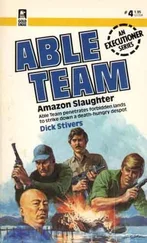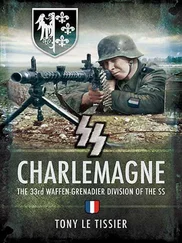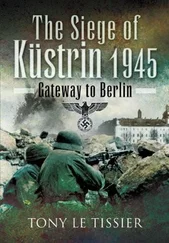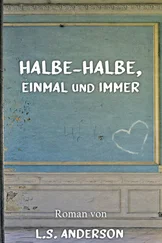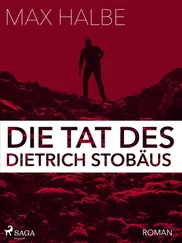We were alerted early on 26 April. The Russians were attacking from the west and north-east. We quickly broke out and withdrew to a wood south of Neubrück, north of Märkisch Buchholz. We got a bit of a rest in the Hammer Forest, disturbed only by occasional attacks from Russian ground-attack aircraft. We lay camouflaged under the trees, so they didn’t bother us much.
With us and around us were gathering the pitiful remnants of 9th Army. The field kitchens, such as there were, formed assembly points for the shattered or simply scattered units, and food was doled out only to members of their own units, thus serving to get the troops together again.
What we didn’t know, and only discovered much later, was that Zhukov’s armies had long since thrust through to Berlin on the direct route via Seelow–Müncheberg–Rüdersdorf, and that our fighting since 17 April had amounted only to pathetic pinpricks in the southern flank of the Russian troops, who had long since gone past us. The Russian formations had certainly not taken this seriously, otherwise, in view of the comparison of strengths, there would have been nothing of us left.
While a large part of 9th Army had remained in its positions on the Oder on Hitler’s express orders, Koniev’s armies had broken through north-westwards from the Lausitz and had reached the southern outskirts of Berlin ahead of Zhukov’s troops. The 9th Army had been encircled.
There was no more talk now of a relief attack on Berlin, for it had become a question of breaking out to the west. The efforts of the units to assemble, and get themselves into order in the Hammer Forest, served only as preparations for the march and break-out from encirclement.
After all the chaotic events of the past days since we had left our positions in the woods near Fürstenberg, we were astonished how everything came together: field kitchens and supply wagons, a handful of trucks with all sorts of supplies and ammunition, finally two guns and fifty or so men, in effect stragglers – that was all that was left of the 32nd SS Tank-Hunting Battalion.
Fuel was scarce, so all the supply vehicles had to remain behind here, only the assault guns and the field kitchen were to drive on, as were the fuel truck as long as it had a few full cans of petrol. We crammed our packs from the supply vehicles and sorted out what seemed to be the most important, and what we could carry, the rest being thrown carelessly into the undergrowth. The field kitchen’s vat steamed and there was no lack of food. Only the essentials would be taken on the march, so our messtins were filled to the brim and we could have as much as we liked. The remaining supplies, especially arms and ammunition, were loaded on to the few vehicles coming with us, the last tanks and assault guns, a few self-propelled anti-tank and anti-aircraft guns, and some towing vehicles. I was lucky to be assigned as relief gunner to one of the remaining assault guns, and so had the prospect of riding at least part of the way.
Once it was dark, we rolled ourselves up in our blankets and tent-halves and tried to sleep on the forest floor next to the gun. [16] Gädtke, Von der Oder zur Elbe , pp. 32–3. German soldiers were issued with waterproof tent-halves that could be worn as capes or fastened together to form simple pup-tents.
NINE
The Pocket Shrinks
27 APRIL 1945
Fragmentary break-out attempts from Halbe continued from the night before, and 1st Guards Breakthrough Artillery Division claimed to have destroyed four infantry companies, eight machine guns, neutralized a howitzer battery, killed 130 Germans and captured a further 35, plus an artillery piece. [1] Domank, ‘The 1st Guards Breakthrough Artillery Division at Halbe’.
However, one break-out group took the village of Zesch and reached as far as the Soviet third cordon at Neuhof on the Zossen–Baruth road (Reichsstrasse 96) in the north, while a few small groups managed to get through the third cordon on the Zossen–Baruth road and reached as far as Paplitz in the south. The 13th Army’s 395th Rifle Division in its fire-brigade role and 4th Guards Tank Army’s 68th Guards Tank Brigade counterattacked, leading to some heavy fighting around Zesch. Further south another group was driven out of Dornswalde by 96th Guards Rifle Division of 28th Army’s 3rd Guards Rifle Corps. The soldiers breaking out of the encirclement fought as their predecessors had done of old, but their attacks were checked and their combat teams shattered. Partly surrounded once more, they suffered heavy casualties, and only a very few were able to flee unnoticed into the surrounding woods and hide. Soviet claims for the day amounted to 6,200 prisoners, 47 tanks and APCs, 180 guns and mortars, and 1,132 vehicles captured. [2] Wilke, Am Rande der Strassen , p. 54.
Extracts from the diary of a soldier from Hamburg, later killed, describe events that day:
After I had made a few notes in my diary, we had to move on again. Our transport and everything was left behind – even though the vehicle was carrying several wounded – and we moved off to the right from the road into a wood. There we came across a large group of stragglers and were told that in the last pocket everything had had to be left for Ivan – vehicles, supplies, ammunition, wounded – and those who had had enough had surrendered to the enemy.
We then came to some marshes that deprived us of the last of our strength. The second lieutenant from the previous day and a captain lay down on the saturated ground, their strength at an end. The captain pulled himself up, propped himself against a tree trunk and said: ‘Comrades, I am disbanding our group. Whoever thinks he has to, push through to Berlin.’
I had lost Helmut in the confusion again. It was not long before I came to a barn that stood alone in the meadows. I crept inside and slept until the sun went down. The sleep had strengthened me, and when I opened my eyes, there was a captain and nine comrades lying beside me. They were all southern Germans who wanted to go home. They had a map and a compass, and I was invited to join them. They wanted to cross the Elbe near Wittenberg, and so I was happy to have at last found people wanting to get away from the Russians. [3] Lakowski/Stich, Der Kessel von Halbe 1945 , pp. 101–2.
This unknown soldier probably belonged to one of the many groups of men from the shattered 9th Army who had become separated from their units and were wandering around the woods afraid of capture by the Russians. [4] Ibid .
Generals Busse and Wenck received a further order from Colonel-General Jodl that day demanding:
Concerted attacks by 9th and 12th Armies should serve not only to rescue 9th Army, but especially to save Berlin… XX Corps, after reaching the line Beelitz–Ferch, is to attack [north-east to] Löwenbruch–Stahnsdorf; 9th Army to thrust north via Trebbin, establish contact with 12th Army and cover the rear on the line Luckenwalde–Baruth. [5] Förster/Lakowski, 1945 – Das Jahr der endgültigen Niederlage der faschistischen Wehrmacht , p. 342 [citing Federal Military Archives RH W.30.10./6, Sheet 842].
Major Brand of 21st Armoured Reconnaissance Battalion wrote about the situation within 21st Panzer Division:
Orders from above obviously still inevitably mean higher casualties on our side. Attempt on 27 April to convince General Marcks to break away from the Army and break through to the west unilaterally. Marcks puts off the decision until later. [6] Brand in the author’s Death Was Our Companion .
General Marcks was a disciple of the fanatical Field Marshal Ferdinand Schörner, who had set up flying courts martial to deal with any unauthorized troops found behind the lines or away from their units, and Colonel von Luck had previously lost a senior NCO escorting tanks sent back for repair as a result of this. From the comments of von Luck and Brand, there can be little doubt that Marcks was distinctly unpopular with his officers. [7] Von Luck, Gefangener meiner Zeit , pp. 259, 264–5, 270–1.
Читать дальше

